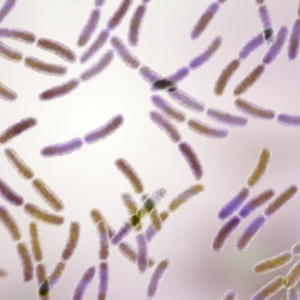Yes, lactic acid bacteria (LAB) can potentially play a role in fighting fungal pathogens on plants. LAB are commonly found in  various environments, including the soil and on plant surfaces. They are known for their beneficial properties in agriculture and plant protection. While LAB are not typically considered direct antagonists to fungal pathogens, they can indirectly help in several ways:
various environments, including the soil and on plant surfaces. They are known for their beneficial properties in agriculture and plant protection. While LAB are not typically considered direct antagonists to fungal pathogens, they can indirectly help in several ways:
- Antagonistic Microbial Interactions: LAB can compete with fungal pathogens for resources, such as nutrients and space. This competition can limit the growth and establishment of fungal pathogens on plant surfaces.
- Production of Antifungal Compounds: Some LAB strains produce antimicrobial compounds, such as organic acids (including lactic acid) and bacteriocins, which can inhibit the growth of fungal pathogens.
- Induced Systemic Resistance (ISR): LAB can trigger a plant’s natural defense mechanisms, including the induction of systemic resistance against fungal pathogens. This enhanced resistance can make plants more resilient to fungal infections.
- Biofilm Formation: LAB can form biofilms on plant surfaces, creating a physical barrier that can impede the attachment and colonization of fungal pathogens.
- Nutrient Competition: LAB can consume nutrients that are essential for the growth of fungal pathogens, thereby reducing the availability of these nutrients to the fungi.
It’s important to note that the effectiveness of LAB in controlling fungal pathogens can vary depending on the specific LAB strain, the type of fungal pathogen, and the environmental conditions. Therefore, researchers and growers often conduct studies and trials to determine the most suitable LAB strains and application methods for a given agricultural context.
In agriculture, the use of LAB-based biocontrol products is being explored as a sustainable and eco-friendly approach to manage fungal diseases and promote plant health. However, it’s essential to consider integrated pest management strategies that may include multiple approaches, including cultural practices, biological control agents, and chemical treatments, to effectively manage fungal pathogens on plants.


